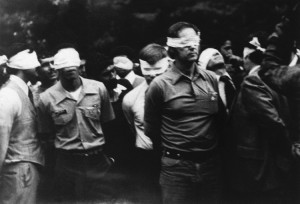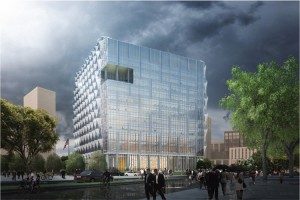40 Years Ago: the Iran Hostage Crisis
Monday, November 4th, 2019November 4, 2019
Forty years ago today, on Nov. 4, 1979, Iranian revolutionaries seized the United States Embassy in Tehran, Iran’s capital, and took 66 Americans hostage. Islamic revolutionaries had taken control of Iran’s government earlier in the year. The revolutionaries seized the U.S. Embassy after Iran’s former shah (king), Mohammad Reza Pahlavi, was admitted into the United States. The revolutionaries wanted the shah returned to Iran to stand trial for crimes allegedly committed during his rule. The shah was not returned, and he died during the crisis.

Blindfolded American hostages are paraded inside the U.S.
Embassy compound on Nov. 4, 1979. Credit: © Bettmann/Getty Images
The United States and other countries denounced the seizure of the U.S. Embassy as a violation of international law and demanded that the hostages be freed. Thirteen hostages—women and African Americans—were freed within weeks, but the rest (except for one released due to illness) were kept for more than a year. The United States placed harsh economic sanctions on Iran, and after a failed rescue attempt, the death of the shah, and lengthy negotiations, the hostages were at last released on Jan. 20, 1981.
The Iran hostage crisis ended diplomatic relations between Iran and the United States. Images of the bound and blindfolded hostages dominated media coverage during the 444-day event. For a more detailed account of the international incident, see the World Book article Iran hostage crisis.



